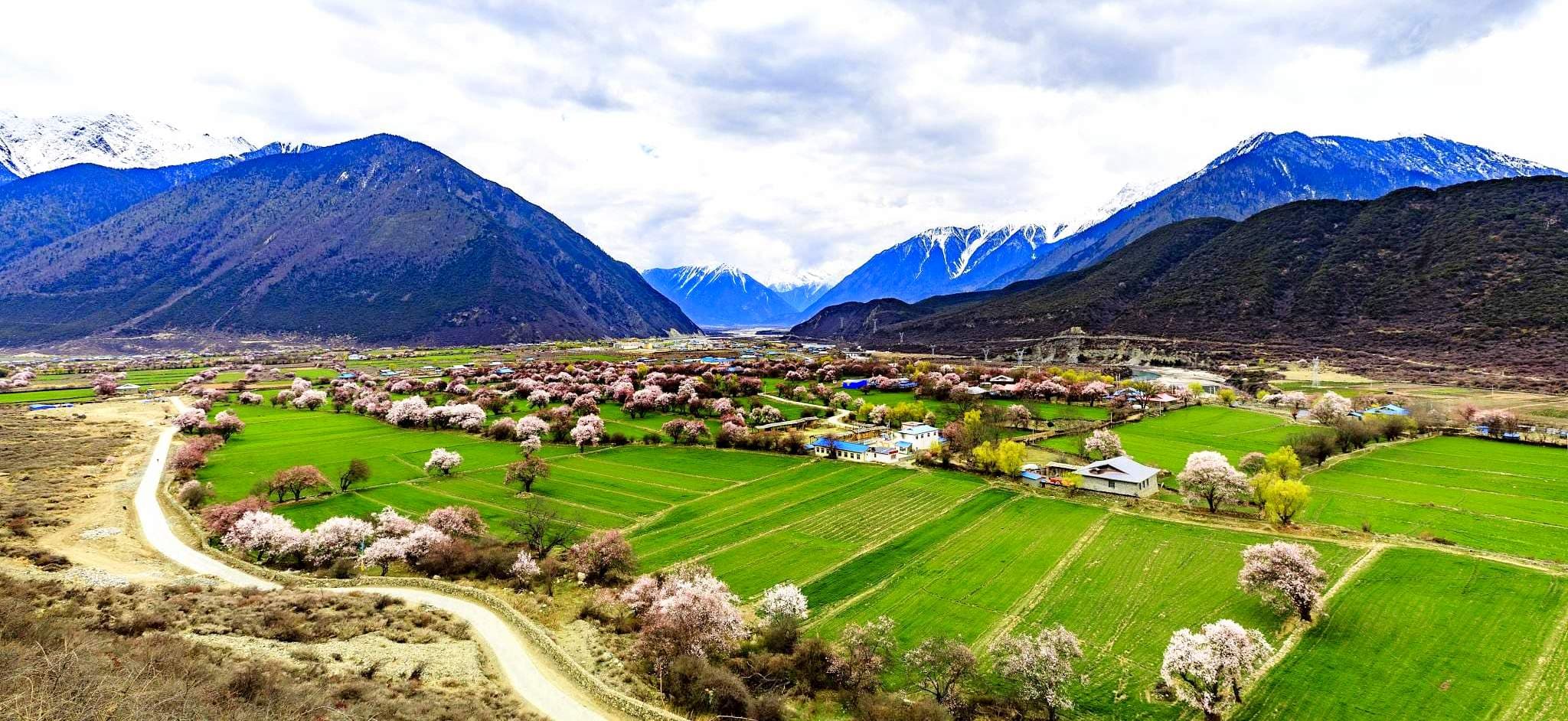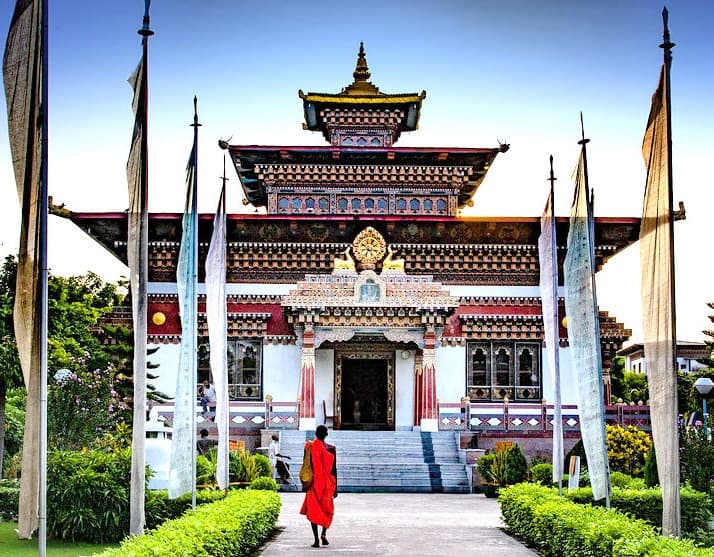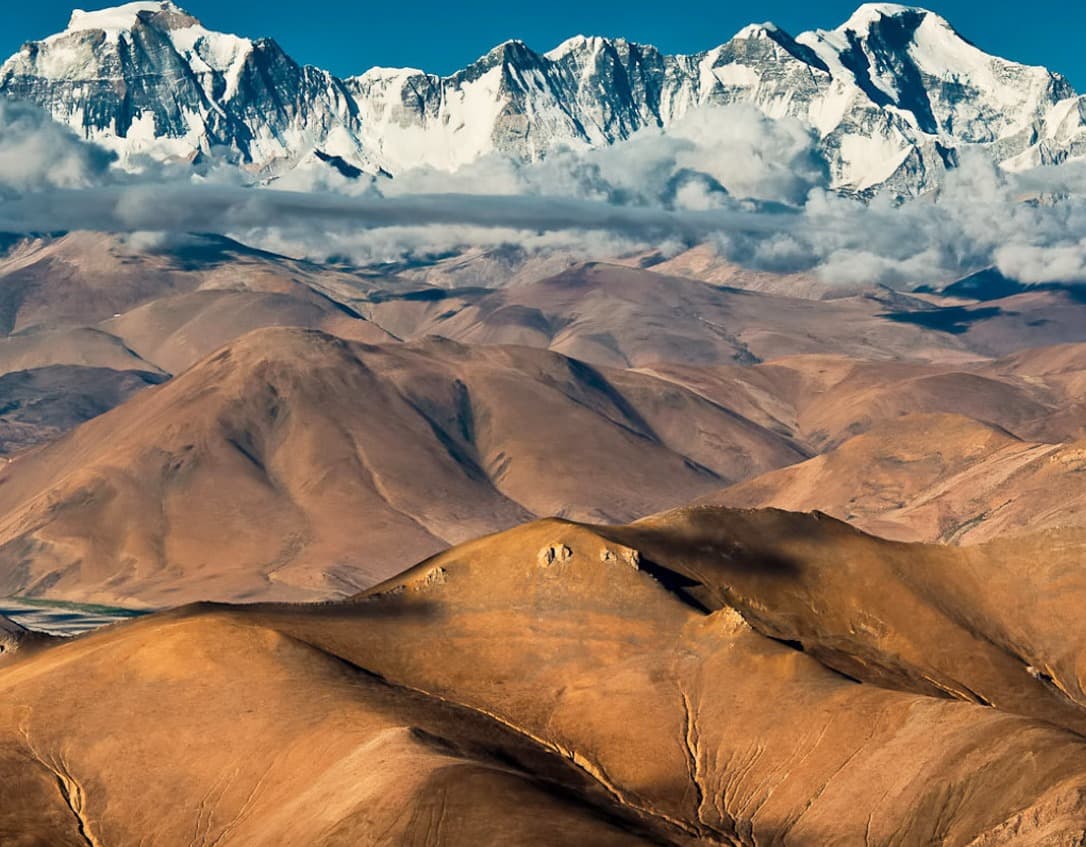- Spring in Tibet: A Time of Rebirth (April to June)
- Summer in Tibet: Festivals and Warmth (July to September)
- Autumn in Tibet: Clear Skies and Harvest (October to November)
- Winter in Tibet: Serene Solitude (December to March)
- Year-Round Insight
- FAQs of the Detailed Guide to the Four Seasons in Tibet: What to Expect When
Exploring Tibet throughout the year reveals a land of diversity and dramatic beauty, each season offering a distinct experience to its visitors. In this Detailed Guide to the Four Seasons in Tibet, we uncover what each season brings, from the vibrant festivities and lush landscapes of summer to the tranquil, snowy serenity of winter. Whether you are planning a spiritual journey, a cultural exploration, or an adventurous trek, understanding the seasonal variations is crucial for making the most of your trip. This guide will provide essential insights into the weather, activities, and scenic highlights you can expect, helping you choose the perfect time for your travel to Tibet. With each season offering its own unique charm and challenges, a well-timed visit can transform a simple trip into a profound life experience.
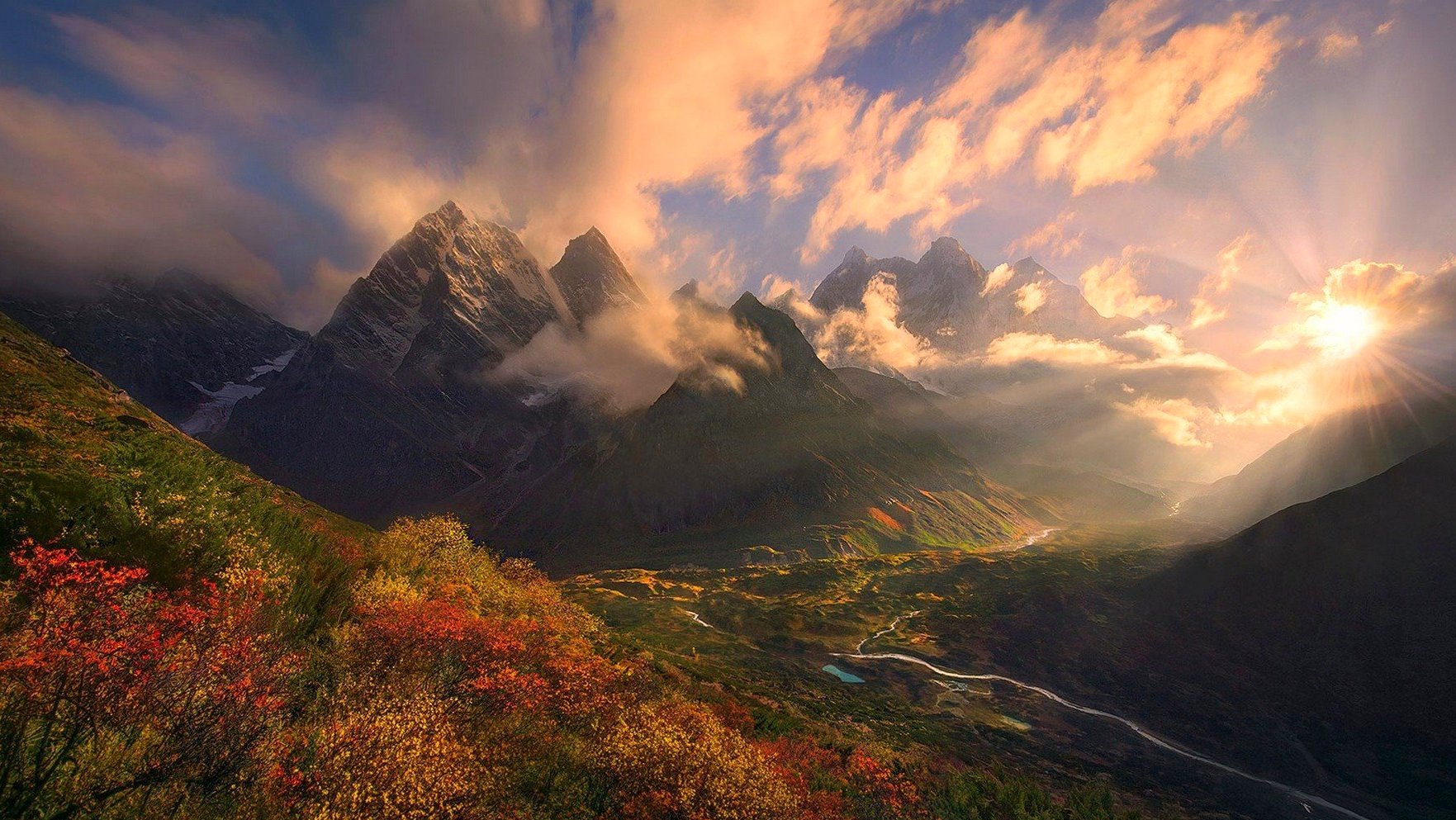
At Druk Holidays, we specialize in providing you with the most comprehensive Detailed Guide to the Four Seasons in Tibet. Our expertise ensures you know exactly what to expect in each season, from the vibrant festivals and lush landscapes of summer to the serene, snow-covered beauty of winter. Whether you’re interested in trekking through the Himalayas or exploring Tibetan culture, we offer tailored advice on the best travel conditions, activities, and scenic highlights for every season. Trust us to help you plan an unforgettable journey through Tibet’s stunning landscapes and rich cultural heritage.
Spring in Tibet: A Time of Rebirth (April to June)
Spring in Tibet is a season of vibrant transformation, marking the rebirth of nature as the harsh Himalayan winter gives way to a period of renewal and growth. From April to June, the landscape across this high-altitude region begins to burst into life, offering travelers a visually stunning and culturally rich experience. Here’s what you can expect during a spring visit to Tibet:
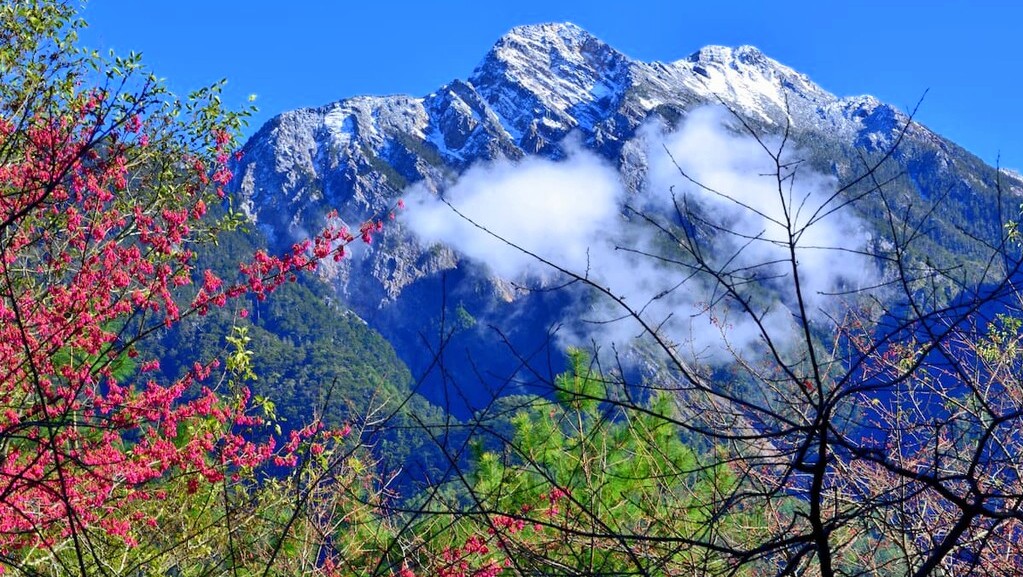
Weather Conditions
- Temperatures begin to rise, though they can still be quite cool, especially at higher altitudes. Daytime temperatures generally range from 5°C to 15°C.
- Climate is mostly dry, with the occasional pre-monsoon shower appearing towards late June. This makes spring one of the drier times to visit, ideal for outdoor activities.
Activities and Sightseeing
- Trekking: The melting snow opens up many of Tibet's famous trekking routes, such as the trek to Everest Base Camp and the journey around Mount Kailash. The trails are less crowded compared to the peak seasons, offering a more serene hiking experience.
- Festivals: Spring hosts several important Tibetan festivals, such as Saga Dawa in May, celebrating the birth, enlightenment, and death of Buddha. These festivals are profound cultural experiences, filled with rituals and celebrations.
- Flora and Fauna: As the ground thaws, wildflowers begin to carpet the meadows, and migratory birds return, adding to the region's biodiversity and beauty. This is an excellent time for nature lovers to visit.
Travel Tips
- Acclimatization: Given Tibet's high altitude, allow sufficient time to acclimatize to prevent altitude sickness. Spend a few days in Lhasa or a similarly elevated town before venturing into higher regions.
- Packing: Layered clothing is essential for handling the variable temperatures, along with sturdy trekking boots and sun protection due to the intense UV rays at high altitudes.
Spring in Tibet not only offers the chance to witness the spectacular awakening of nature but also provides a unique glimpse into the cultural heartbeat of this mystical region, making it a truly special time for an adventurous escape.
Summer in Tibet: Festivals and Warmth (July to September)
Summer in Tibet, stretching from July to September, is a season marked by warmth, monsoon rains, and vibrant cultural festivals. This period brings a blend of lush landscapes and festive spirit, making it a unique time for visitors to experience the rich traditions and natural beauty of the region. Here's what you can expect during a summer visit to Tibet:

Weather Conditions
- Temperatures are comfortably warm during the day, ranging from 10°C to 22°C, which makes exploring outdoor sites quite pleasant.
- Monsoon Rains predominantly occur in the afternoons, particularly in July and August. Mornings are generally sunny and clear, providing the best time for sightseeing before the rain sets in.
Activities and Sightseeing
- Festivals: Summer is the peak season for Tibetan festivals, including the famous Shoton Festival in Lhasa, where you can witness the unveiling of giant thangkas and enjoy traditional Tibetan opera performances. Other notable events include the Nagqu Horse Racing Festival and the Yarlung Cultural Festival, which showcase traditional sports, music, and dance.
- Scenic Beauty: The monsoon rains rejuvenate the landscape, turning the valleys and mountains vibrant green and filling the rivers and lakes. This is an excellent time for photography and enjoying the natural scenery.
- Trekking: Despite the rain, many trekking routes are still accessible and offer stunning views of the lush, verdant environment. Early mornings are particularly recommended for hikes to avoid the afternoon showers.
Travel Tips
- Prepare for Rain: Packing waterproof clothing and gear is essential for dealing with the monsoon weather. Ensure you have a reliable raincoat, waterproof backpack covers, and sturdy, water-resistant footwear.
- Festival Attendance: If you plan to visit during one of the major festivals, it’s wise to book accommodations and transportation well in advance, as these events can draw large crowds, including many domestic tourists.
- Wildlife Watching: The summer season is also ideal for spotting wildlife, as many species are more active during the cooler parts of the day and the lush landscapes provide ample food sources.
Summer in Tibet offers a dynamic mix of warm weather, cultural festivities, and stunning natural landscapes. It's a time when the region's cultural heritage comes alive, and the natural world bursts into life, providing travelers with a deeply enriching and visually spectacular experience.
Autumn in Tibet: Clear Skies and Harvest (October to November)
Autumn in Tibet is a season highly cherished by travelers and locals alike, celebrated for its clear blue skies, stable weather, and the spectacular autumnal colors that adorn the landscape. Running from October to November, this period offers some of the most visually stunning and climatically pleasant conditions for exploring Tibet. Here’s what you can expect during an autumn visit to Tibet:
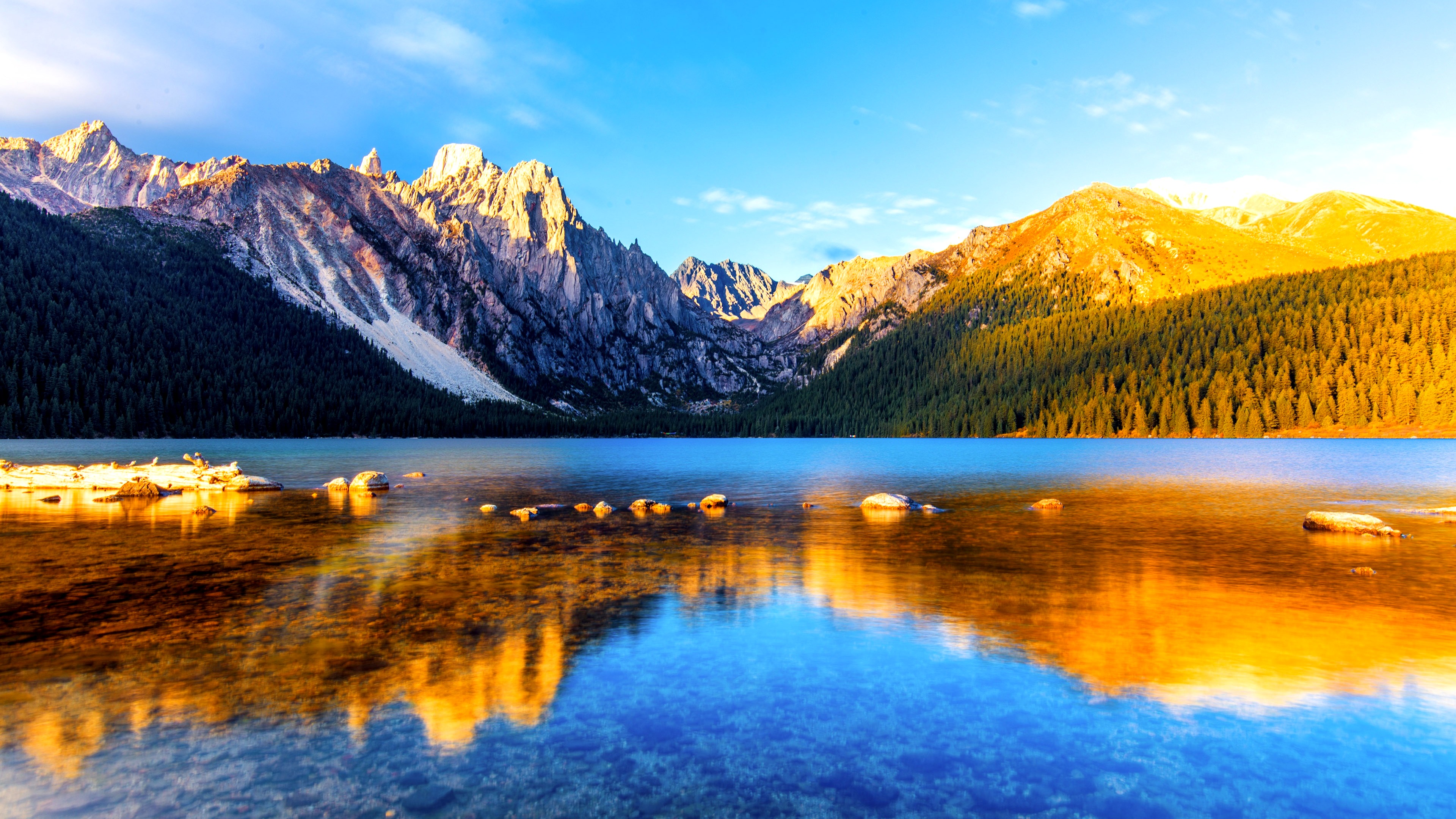
Weather Conditions
- Temperatures are mild, making daytime exploration extremely comfortable. Daytime temperatures typically range from 7°C to 19°C, but it's essential to prepare for cooler evenings and mornings.
- Climate is predominantly dry, with little to no rainfall, which greatly enhances visibility and makes this season ideal for photography and long-distance treks.
Activities and Sightseeing
- Trekking: Autumn is the peak season for trekking in Tibet, thanks to the dry weather and clear skies. Popular trekking routes like the Mount Everest Base Camp and the Annapurna Circuit are in optimal condition, offering breathtaking views of the snow-capped peaks against the backdrop of deep blue skies.
- Harvest Season: This time of year is also harvest season in Tibet, where you can witness the local communities engaged in harvesting barley and other crops, an integral part of Tibetan culture.
- Cultural Festivals: While the major religious festivals occur in other seasons, several smaller local celebrations and thanksgiving rituals happen in autumn, providing a glimpse into the everyday spiritual and cultural life of the Tibetan people.
Travel Tips
- Packing: Layered clothing is still a must, as temperatures can vary significantly between day and night. Include a mix of light layers and warm outerwear.
- Photography: For photographers, the excellent visibility and golden hues of the landscape create perfect conditions for capturing the stunning beauty of Tibet. Don’t forget to bring extra batteries and memory cards, as the cold can drain battery life more quickly.
- Advance Planning: Given that autumn is a popular time for tourists, it's wise to book your accommodations and travel arrangements well in advance to secure the best options and avoid the last-minute rush.
Autumn in Tibet not only offers favorable weather conditions but also a peaceful yet vibrant atmosphere, making it an ideal time for both adventure seekers and those looking to delve deeper into the cultural fabric of this unique region.
Winter in Tibet: Serene Solitude (December to March)
Winter in Tibet spans from December to March, offering a serene and introspective travel experience. This season showcases a quieter side of Tibet, with fewer tourists and a landscape dramatically transformed by snow. The crisp, cold air and peaceful atmosphere create a unique setting for those seeking solitude and a different perspective on Tibetan culture and nature. Here’s what you can expect during a winter visit to Tibet:

Weather Conditions
- Temperatures are generally cold, often dipping below freezing, especially at night and in the early mornings. However, days can be surprisingly sunny, albeit still chilly.
- Climate sees regular snowfall, particularly at higher altitudes, covering the landscape in a beautiful blanket of white. The clear skies typical of Tibetan winters allow for stunning views of the Himalayas.
Activities and Sightseeing
- Cultural Festivals: Despite the cold, winter is a vibrant time for Tibetan culture, highlighted by the Losar (Tibetan New Year), which usually falls in February or March. This festival is filled with ancient rituals, dances, and a general festive spirit that enlivens the cold days.
- Monastic Life: Winter is an excellent time to visit monasteries, as the monk debates and religious activities continue. With fewer tourists around, visitors can engage more deeply with the monastic community and gain a better understanding of Tibetan Buddhism.
- Scenic Views: The snow-capped mountains and frozen lakes offer breathtaking landscapes ideal for photography. The low humidity and clear air enhance visibility, making it a great time for capturing the rugged beauty of Tibet.
Travel Tips
- Warm Clothing: It’s essential to pack appropriate warm clothing, including thermal layers, a heavy down jacket, insulated boots, gloves, and a hat. The dry cold can be piercing, especially when exposed to wind.
- Travel Safety: While major cities like Lhasa are accessible, some remote areas might be difficult to reach due to snow. Always check local travel advisories and consider hiring experienced local guides for navigating winter roads and trails.
- Health Precautions: The combination of high altitude and cold weather can be challenging. Ensure you stay hydrated, eat well, and keep warm to prevent altitude sickness and hypothermia.
Winter in Tibet is not for everyone, but for those who appreciate the quiet beauty of snow and the introspective pace of the season, it offers a deeply rewarding experience. The serenity and reduced number of tourists provide a more personal glimpse into the heart of Tibetan culture and spirituality.
Year-Round Insight
Tibet, with its distinct geographical and cultural attributes, provides varied experiences throughout the year, catering to diverse interests and preferences. Whether you are captivated by the grandeur of spiritual festivals, the peace of natural landscapes, or the adventure of trekking through awe-inspiring terrains, Tibet has something unique to offer every visitor. Here are some year-round insights to help you make the most of your visit to this high-altitude region:
- Sustainable and Responsible Tourism: Tibet is known for its rich heritage and unique ecosystem. The approach to tourism here encourages sustainability and environmental responsibility. Visitors are urged to respect local customs, minimize their environmental impact, and adopt responsible travel practices to help preserve Tibet’s cultural and natural heritage.
- Cultural Etiquette and Sensitivity: Engaging respectfully with Tibetan culture is crucial for a fulfilling travel experience. Dress modestly, especially when visiting monasteries, and seek permission before photographing people or religious sites. Respecting the local customs enhances your interactions and allows for a deeper appreciation of Tibetan life.
- Diverse Climate and Geography: The climate in Tibet can range from harsh winter cold to pleasant summer warmth, varying significantly with altitude and region. Prepare accordingly for the area you plan to explore, and be ready for sudden weather shifts, particularly in mountainous regions.
- Rich Biodiversity: Tibet’s diverse ecosystems are home to unique flora and fauna, making it a paradise for nature lovers. From the rare Tibetan antelope in the Changtang Wildlife Sanctuary to the majestic views of the Himalayan ranges, the region offers extensive opportunities for wildlife observation and nature exploration.
- Spiritual and Wellness Retreats: The profound Buddhist influence in Tibet offers visitors opportunities for spiritual exploration and personal reflection through meditation and wellness retreats. These experiences can provide deeper insights into Tibetan spiritual practices and contribute to personal well-being.
- Festivals and Events: Tibetan festivals, such as Losar (Tibetan New Year) and the Monlam Prayer Festival, are profound cultural highlights, featuring traditional rituals, dances, and music. Timing your visit to coincide with these festivals can greatly enrich your experience, offering a vivid glimpse into Tibet’s spiritual and cultural life.
- Unique Culinary Experiences: Tibetan cuisine, known for its simplicity and reliance on barley, yak meat, and dairy products, offers visitors a chance to experience unique dishes like Tsampa (roasted barley flour) and Butter Tea. Embrace the local dining culture to fully appreciate the culinary traditions of Tibet.
By understanding and embracing these year-round insights, visitors can ensure a more engaging and respectful journey through Tibet, truly making the most of all that this extraordinary region has to offer.
Tibet is a destination that offers distinctly different experiences across its four seasons, each imbued with its own unique beauty and challenges. From the blooming vitality of spring and the vibrant cultural festivities of summer to the clear, scenic vistas of autumn and the serene, contemplative quiet of winter, Tibet invites travelers to explore its many facets throughout the year. Whether you're seeking adventure, cultural immersion, or a peaceful retreat into nature, Tibet has a season to suit every preference. By understanding the seasonal characteristics and planning your trip accordingly, you can fully embrace the rich tapestry of experiences Tibet has to offer, making your journey not just a visit, but a profound engagement with this ancient and mystical land.
FAQs of the Detailed Guide to the Four Seasons in Tibet: What to Expect When
Q: What is the best time to visit Tibet for good weather?
A: Autumn (October to November) is generally considered the best time to visit Tibet due to the clear skies, stable weather, and moderate temperatures. This season offers excellent conditions for trekking and sightseeing.
Q: Can I visit Tibet in the winter, and what should I prepare for?
A: Yes, you can visit Tibet in winter. It offers a unique experience with fewer tourists and stunning snowy landscapes. Prepare for very cold temperatures by packing warm, layered clothing, including thermal undergarments, insulated jackets, gloves, and a hat. Also, consider the shorter days and potential travel disruptions due to snow.
Q: Are there any festivals in Tibet that I can attend year-round?
A: While festivals occur throughout the year, summer and autumn host the most significant events. The Shoton Festival in summer and the Saga Dawa Festival in spring are particularly vibrant and provide deep insights into Tibetan culture.
Q: What activities can I do in Tibet during the different seasons?
A: Each season offers different activities:
- Spring: Ideal for trekking and sightseeing as the landscape begins to bloom.
- Summer: Great for attending cultural festivals and enjoying the lush, green landscapes.
- Autumn: Perfect for high-altitude treks and photography due to clear skies.
- Winter: Best for experiencing Tibetan New Year and enjoying winter sports like ice skating.
Q: How does the monsoon season affect travel plans in Tibet?
A: The monsoon season (July to September) brings afternoon showers, which can cause travel disruptions, especially on unpaved roads in remote areas. Plan activities for the morning when the weather is clearer, and always have waterproof clothing and gear.
Q: What are the necessary preparations for high-altitude travel in Tibet?
A: Acclimatization to high altitudes is crucial to avoid altitude sickness. Plan to spend a few days at a moderate elevation before ascending to higher altitudes. Stay hydrated, avoid strenuous exercise initially, and consider medications for altitude sickness as prescribed by a doctor.
Q: Is Tibet accessible for travel year-round?
A: Most tourist destinations in Tibet are accessible year-round, but some remote areas might be inaccessible during winter due to heavy snowfalls. Check local travel advisories and road conditions when planning your trip.

